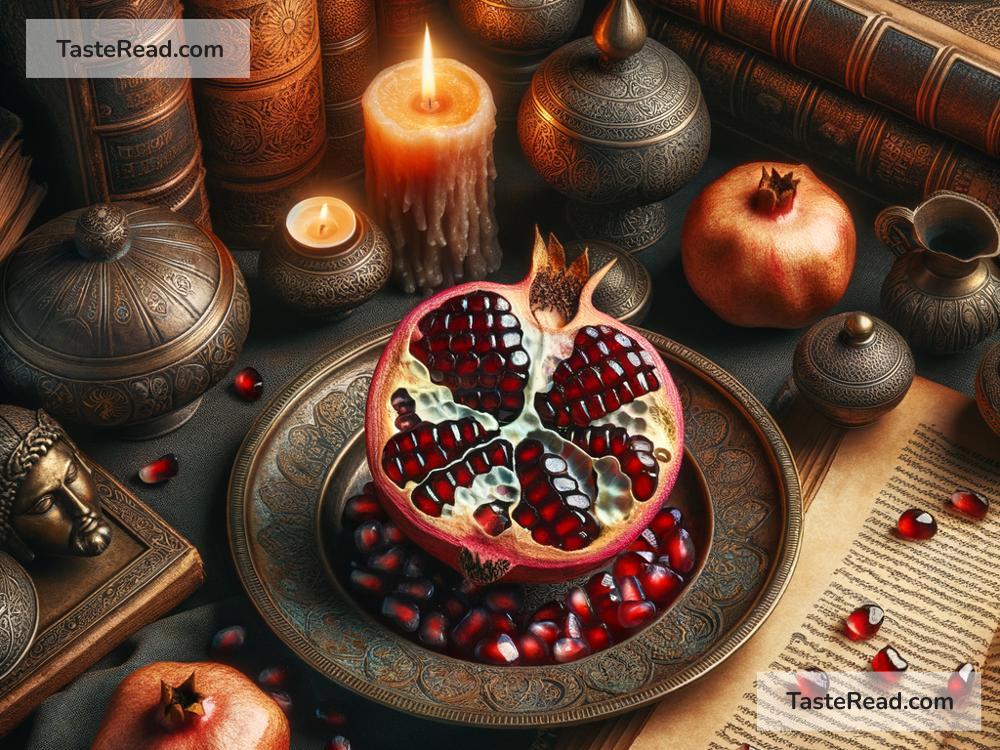The Ancient Significance of Pomegranates in Mythology
The pomegranate is more than just a fruit. Throughout history, it has been a symbol of beauty, mystery, and power. Many ancient cultures saw this red fruit as sacred, and its image appears in myths, legends, and religious texts around the world. From fertility to life and death, the pomegranate carries meanings that have fascinated humans for thousands of years.
What is a Pomegranate?
Before we dive into its symbolism, let’s take a moment to understand what a pomegranate is. It is a round, reddish fruit with thick skin. Inside, it has many juicy seeds surrounded by a sweet-sour pulp. The seeds are protected by tiny chambers, which make opening a pomegranate feel special, almost like discovering treasure. This unique structure made the fruit a symbol of abundance and mystery in many ancient stories.
Why Pomegranates Were Special
In ancient times, fruits were often connected to gods, spirits, or natural forces. Seasonal fruits were seen as gifts from the earth, essential for survival. The pomegranate stood out because of its rich color, its numerous seeds, and its ability to grow in challenging climates. It also had healing properties, being rich in nutrition. This combination of beauty, health, and abundance made it the perfect fruit for myths and legends.
Pomegranates in Greek Mythology
One of the most famous stories about pomegranates comes from Greek mythology. Have you heard of Persephone? She was the daughter of Demeter, the goddess of harvest and agriculture. Persephone was kidnapped by Hades, the god of the underworld, who wanted her to be his queen.
While living in the underworld, Persephone ate six seeds from a pomegranate. According to ancient rules, eating food from the underworld meant you had to stay there. Because of this, Persephone could not fully return to her mother. Instead, she had to split her time between the earth and the underworld: six months below and six months above. This story is used to explain the changing seasons. When Persephone is in the underworld, Demeter mourns her absence, and the earth experiences winter. When Persephone returns, spring and summer arrive.
In this myth, the pomegranate represents the cycle of life, death, and rebirth. It is also connected to desire and temptation. These ideas gave the fruit a deeper, spiritual meaning in Greek culture.
Pomegranates in Ancient Egypt
The ancient Egyptians also prized the pomegranate. Archaeologists have found pomegranates in Egyptian tombs, including King Tutankhamun’s. Egyptians believed in the afterlife, and the pomegranate was seen as a symbol of eternal life. They used its juice as medicine and considered it a fruit that could heal both the body and soul.
It is said that Egyptian artwork sometimes depicted the pomegranate as a tree of life. For them, this tree connected the earthly realm to the divine. The fruit’s deep red color might have reminded them of blood, which is essential for life.
Pomegranates in Persia
The pomegranate held special significance in ancient Persia (modern-day Iran). In Persian mythology, it was linked to fertility and eternal life. Warriors would eat pomegranates before battle, believing the seeds gave them strength and protected them from harm. In Zoroastrianism, one of the oldest known religions, pomegranates were seen as sacred and appeared in rituals. They symbolized the fight between good and evil, with their seeds representing prosperity, hope, and unity.
Even today, pomegranates remain central in Persian culture. They are celebrated during Nowruz, the Persian New Year, as an emblem of renewal and abundance.
Pomegranates in Hindu and Buddhist Traditions
In Hindu and Buddhist mythology, pomegranates were viewed as fruits of good health and longevity. In Hindu texts, the fruit is connected to prosperity and fertility. Its color and juice symbolize vitality, while its many seeds represent the infinite possibilities of life.
In Buddhism, the pomegranate is one of three blessed fruits, along with the peach and citron. It is said to bring health and happiness, and stories describe the Buddha giving pomegranates as gifts of compassion and kindness.
Pomegranates in Abrahamic Religions
The pomegranate also has deep roots in Abrahamic religions—Judaism, Christianity, and Islam. In Judaism, the fruit is a symbol of righteousness because of its many seeds. Some stories say the fruit has 613 seeds, which correspond to the 613 mitzvot, or commandments, in the Torah. Pomegranates are often eaten during the Jewish New Year (Rosh Hashanah) as a reminder to live a fruitful life.
In Christianity, pomegranates appear in art and literature, symbolizing resurrection and eternal life. The fruit’s seeds, enclosed in a protective skin, were seen as a metaphor for the soul’s protection by God.
In Islam, the pomegranate is mentioned in the Quran as one of the fruits found in paradise. Its beauty and numberless seeds were viewed as signs of Allah’s creativity and generosity.
Conclusion
The pomegranate is not just food; it’s a symbol that connects cultures, religions, and myths across the world. Whether it represents fertility, life and death, or eternal wisdom, its meaning goes far beyond its seeds.
We may admire its beauty and enjoy its taste, but the ancient stories remind us that the pomegranate carries powerful lessons about humanity, nature, and the spiritual journey we all walk through life. Next time you crack open a pomegranate, think about its long history and the countless meanings hidden inside!


